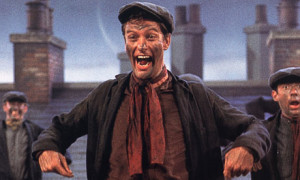In a tragic moment of weakness, more musings drawn from writing and editing, in case they might be of use or interest, especially to people just getting into the Dreadful Game (ie. writing). Last time we discussed the Covering Letter and the general form of the Submission. This time we ponder three different aspects of The Writing itself, which is bound to be more contentious. So I’ll stop there… no, it’s too late.
I could be wrong, too. You, dear listener, may be a leading light in transgressive and explorative prose, or an intense lyrical poet, and thus be able to say bollocks to the following. I, on the other hand, tell stories and occasionally go weird. So this is about straight-forward writing, not absinthe and incipient social disintegration.
I dare say that I’ve been guilty of everything below at one time or another. I’ve seen these in commercially available stories, in some of the submissions we receive and even (gosh) in Big Novels from Grown-Up Publishers. They’re not necessarily story-killers, but may be worth considering before you send that attachment…
(the previous post in this not-really-a-series is here: so you want to submit a story )
1) The Indescribable World of Descriptions
Some writers are blessed with – or suffer from – what I call Clive Cussler Syndrome (although it can be even worse in the books of those who ape him). If you have CCS, then every piece of equipment must be described in great detail, especially if it’s a weapon. Take a simple situation:
“She shot him once in the head, and drove away.”
Then Cussler-ise it:
“Lifting the Sigsauer P225A1 single-stack 9mm pistol, she pulled back the Nitron-coated stainless steel slide, pressed lightly on the Short Reset Trigger and shot him just above his Oakley Flak Iridium sunglasses. Almost as impressive as the Sigsauer P220, able to fire 10,000 rounds without failure. Her Lexus RC350, the metallic green model with optional cup-holders, was waiting for her on the street, and she engaged the twin injection engine, knowing that the port injectors improved the power and efficiency of this model.”
I’m barely exaggerating. The first version is 10 words, the second is 83 words. To what degree do your readers really want to know the exact model and specifications of a gun, for example? Could it have been a simple, anonymous pistol, and could she have driven away in just… a car?

We might extend this to clothing, as well, where writers seek to indicate social status through ‘branding’ what their characters wear. This can create two difficulties:
- Never Heard of It – Excessive use of posh brand names risks the fact that unless your readers have a personal shopper and read fashion magazines every day, they won’t know what the hell you’re on about. They have to guess that, with so many brands mentioned, someone has too much money -either the writer or the character.
- The Clothes Horse – You may inadvertently end up by missing out on what really matters. Too much description of clothes, shoes and accessories may be taking up word-count and short-changing the reader on the nature of the person wearing the gear.
Which is part of the general area of over-describing people. It’s tempting to pin a character down with a detailed physical description:
“He had dark, hooded eyes beneath tangled eyebrows, and a narrow face which sported a heavy growth of beard. The point of the beard had been waxed to match a thick, sand-coloured moustache which marked the transition between pale lips and a hooked, almost predatory nose. His hair was long and loose, its dull blonde colour exaggerated by the livid pink of his prominent ears, and came down to his shoulders in a series of light curls which almost disguised a thin neck.”

There you go, another 83 words of your target word-count done, and that’s only the head. The problem here, apart from it being a bit rubbish, is that you could be describing a murderous cultist, or it could be the local green-grocer, a nice chap who always puts an extra onion in your basket. What did you really want to tell us about the man in question? Did we need to know all this to be able to understand or follow the character?
I don’t listen to other people much (which makes this a rather ironic post), but as Elmore Leonard says:
‘Avoid detailed descriptions of characters… In Ernest Hemingway’s “Hills Like White Elephants”, what do the “American and the girl with him” look like? “She had taken off her hat and put it on the table.” That’s the only reference to a physical description in the story.’
If an over-descriptive habit includes many of the secondary characters as well, you end up swamped. In real life, people notice generalities (tall, short, round etc.) and a small number of prominent differences if you’re lucky (a large mole on the cheek, a distinctly missing ear), unless they spend a lot of time with that person. Thus police line-ups are notoriously unreliable, especially if there was any sort of action going on at the time of the encounter.
Some stories have such a level of secondary character description that you can’t be sure who you should be following. Is the man described above going to get his throat slit on page two and never be relevant again? Let’s not spend too much time on him, then.
Advice? Describe only what the reader genuinely needs to know, in terms which assist the process, not stand in the way of it. Unless you’re Clive Cussler, or doing complex literary stuff that’s in a different zone altogether.
One of Those Notes: We can’t mention the word ‘indescribable‘, by the way, without pointing out that too many writers use it and then immediately give a description. Which sort of spoils it. As I wrote last year:
In the guttering light of our one remaining torch, we finally managed to break open the tomb. I slid the stone lid to one side, my arms aching, and there, inside, we saw the indescribable horror that had once been St John Arthur Masters…
“Oh, wait a minute.” said Sandra, squinting. “I’ll tell you what we’ve got here. It’s a ratty old man with half his skin falling off, wearing a shroud which badly needs a wash. He’s deliquescing a bit, which is icky, and his nails need clipping. I think we should set fire to him and go for a pint.”
Sandra’s First Pony by J Linseed Grant
See our article the lurking adjectives of doom for more on adjectival delights.
2) I’m a Victorian, I Am, Guv!
Most characters don’t know that they’re in a period piece of fiction. They think that they’re walking normal streets surround by normal folk, and are not especially interested in picking out every quaint detail of their surroundings or fellow travellers.

For the writer, there is a huge temptation to over-egg the pudding. Two approaches are particularly common:
- Research Madness – In a genuine and laudable effort to bring authenticity to a piece of work, the writer spends enormous amounts of time checking on the cost of laundering two socks in Ealing, buying a mid-range golf club in a Boston store or putting a Bowler hat on the correct side of the head in 1897. The sheer mass of period detail then explodes from the writer’s head. Historical minutiae are embedded throughout the entire story, whether or not they are relevant to the plot, and the piece becomes more accurate than anything actually written in 1897. But not necessarily as readable.
- Emergency Paintballing – The story makes a degree of sense and the plot is functional, but it doesn’t have a particular period feel. So the writer tries to amend this by firing details at the piece after the event. Every single man becomes a ‘cove’, a ‘good egg’, a ‘brick’, or a ‘stout fellow’. No female character is allowed to walk into a room as a woman, only as a ‘maiden’, ‘lady’ etc. Characters are distinguished by one of three types of vaguely period hat, and a Hansom cab is always on the corner. And if the writer likes Dick van Dyke in Mary Poppins, anyone not a ‘toff’ sounds like a deranged chimney-sweep.

Period research is a nightmarish occupation which leads you to one real-life curiosity, then another, most of them more interesting than your story. Then you start to worry that there is a woman in Boston who wrote her thesis on men’s shirt collars (1846-1873), and is now a Senior Associate Professor of Mid-Victorian Starching Practice. You become sure that she will read your story or novel and write to the Washington Post to point out everything you got wrong. Eventually you find that you have spent so much time researching that you no longer have time to write your story anyway.
Advice? Less is more, for the most part. Relax and try to ‘be’ in the period, don’t shovel it onto your readers in bucket-loads.
3) Ooh Look, A Shoggoth
The two sections above hover around technique. This last one is more about theme and content, because it’s about an area that affects me as a reader, writer and editor. It has also come up in a number of ODQ submissions, which is why I include it here.
Ignoring the many and various arguments about H P Lovecraft, neo-Lovecraftian, post-Lovecraftian and Mythosian fiction in this ‘modern’ era, there is a certain amount of investment needed if you want to go down this path. The casual act of bumping into one of the spawn of the Outer Gods whilst feeding a parking meter does not quite cut it. Because of the growth in Mythosian fiction, such things are seen all over the place nowadays, and every other shopkeeper has either bulging eyes and vestigial gills, or an avatar of Nyarlathotep trying to stack cans in Aisle Four.
You’re far more likely to intrigue if you follow the undertones of alienation, the fear of that which is ‘different’ and a sense of humanity’s lack of consequence in a vast, indifferent cosmos. That’s not to say that ‘Lovecraftian monster’ stories can’t work, not at all, but in the case of the occult or supernatural detective tale, for example, something which can be disposed of by casually plugging it with a .45, or kicking it in the gonads, rarely produces that frisson of Lovecraftian strangeness which you might have wanted.
It’s also a tempting route for starting writers, because half the cast already exist (Wiki time can fill days and provide you with cults, damp forbidden books, Gods and creatures who have already been pre-glued ready to insert into your story).
But did you want to have a voice of your own? When it comes to this area, sometimes it’s better to either go deep into the principles of isolation, anomie and utter hopelessness, or steer clear and create your own thing, including your own unique monstrosities.
(Along the same lines, incidentally, just shouting “Satan did it!” in the last few paragraphs doesn’t produce much of an occult story either. Some of the same principles apply – be original.)
Advice? Don’t sit in the middle and miss both chairs. Unless you’re very experienced and have a cast-iron way of getting away with it.

You may now ignore everything I’ve said and go on to sell masses of stories to the highest-paying magazines. See if I care. I have longdogs to walk and pig’s trotters to chop up for their supper, so I’m all right, Jill.


While I’m striving mightily to sell loads of stories to high-rate magazines, I’m still going to have Point Three made into a petit-point sampler to be hung directly over the desk of writing. There’s a lot of writing in this modern age of ours that would profit from it.
The preceding two items are… well, actually, they’re worth cuddling to the writerly bosom as well. Very nice piece.
Thanks for calling in, and for the kind comments. It’s fair to say that every rule can be broken, but you usually have to be reasonably experienced to try it. We just want people to double-check the basics before they fly off into literary genius. 🙂
Awesome post! I am in the first 60 pages of reading a novel where every time the protagonist is mentioned it is with the full name or just the last name…I feel like I am in a pulp mystery instead of a Horror novel, and am wondering if I can stand to finish it…
Thanks. There sometimes comes a point when you want to shout at the author “Yes, I get it – I know who the character is!” A simple ‘he’ or ‘she’ works fine.